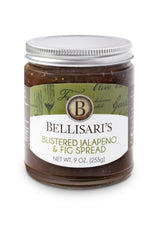
If you suffer from bloating, stomach discomfort, fatigue, constipation, or gas when you eat a plate of pasta or bread, you might want to consider whether you could have a gluten intolerance. Many people believe that if you don’t have celiac’s disease, there is no reason to avoid gluten. I say do what works for you and your body. What have you got to lose? Nothing – because removing cake, cookies, and crackers from your diet will only make you healthier. If you want to try living gluten-free or are preparing meals for someone who avoids gluten, here’s what you need to know.
A gluten-free diet is an eating plan that excludes foods containing gluten. Gluten is a protein found in wheat, barley, rye and triticale (a cross between wheat and rye). A gluten-free diet is essential for managing signs and symptoms of celiac disease and other medical conditions associated with gluten.
A gluten-free diet is also popular among people who haven't been diagnosed with a gluten-related medical condition. The claimed benefits of the diet are improved health, weight loss, and increased energy, but more research is needed.
- Celiac disease is an autoimmune disorder in which gluten triggers immune system activity that damages the lining of the small intestine. Over time this damage prevents the absorption of nutrients from food.
- Non-celiac gluten sensitivity causes some signs and symptoms associated with celiac disease — including abdominal pain, bloating, diarrhea, constipation, "foggy brain," rash or headache — even though there is no damage to the tissues of the small intestine. Studies show that the immune system plays a role, but the process isn't well understood.
Following a gluten-free diet requires paying careful attention to food selections, the ingredients found in foods, and their nutritional content. For example, some farmers spray crops with Roundup (glyphosate) to kill plants and speed the drying of grain. This gives them more control over when they can harvest crops. The weed killer is the subject of hot debate in the scientific community, especially regarding whether it causes cancer. But one study has raised concern about a possible connection between glyphosate and celiac disease. If you would like to reduce your exposure to glyphosates, there are several steps you can take, including:
- Choose foods with the USDA Organic Label
- Choose non-GMO foods
- Check for glyphosate in the listed ingredients or only purchase brands who are committed to avoiding it
Fill up your plate with naturally wholesome gluten-free foods, such as vegetables, fruits, beans, nuts, seeds, fish and lean meat. This is what dietitians recommend makes up the majority of your diet whether you're gluten-free or not.
And if you love your grains, you can still eat them. Many people think that gluten-free means no grains at all, but there are so many great gluten-free options out there. Rice, millet, quinoa. and buckwheat are just a few examples. Today, you can easily find gluten-free pasta made from corn, quinoa, or beans. Some popular gluten-free brands include Simple Mills, Ezeikel, Bob's Redmill, and Siete.
Most of our Bellisari’s spreads and sauces are gluten-free, and we feature several gluten-free recipes on our website. One gluten-free favorite is Bellisari’s Gluten-free Lettuce Wrap Shrimp Tacos, or try this Bellisari’s Gluten-Free Pad Thai recipe. If you have celiac’s or a gluten intollerance, talk to your doctor or dietitian about foods that would provide healthy, nutrient-rich alternatives.






